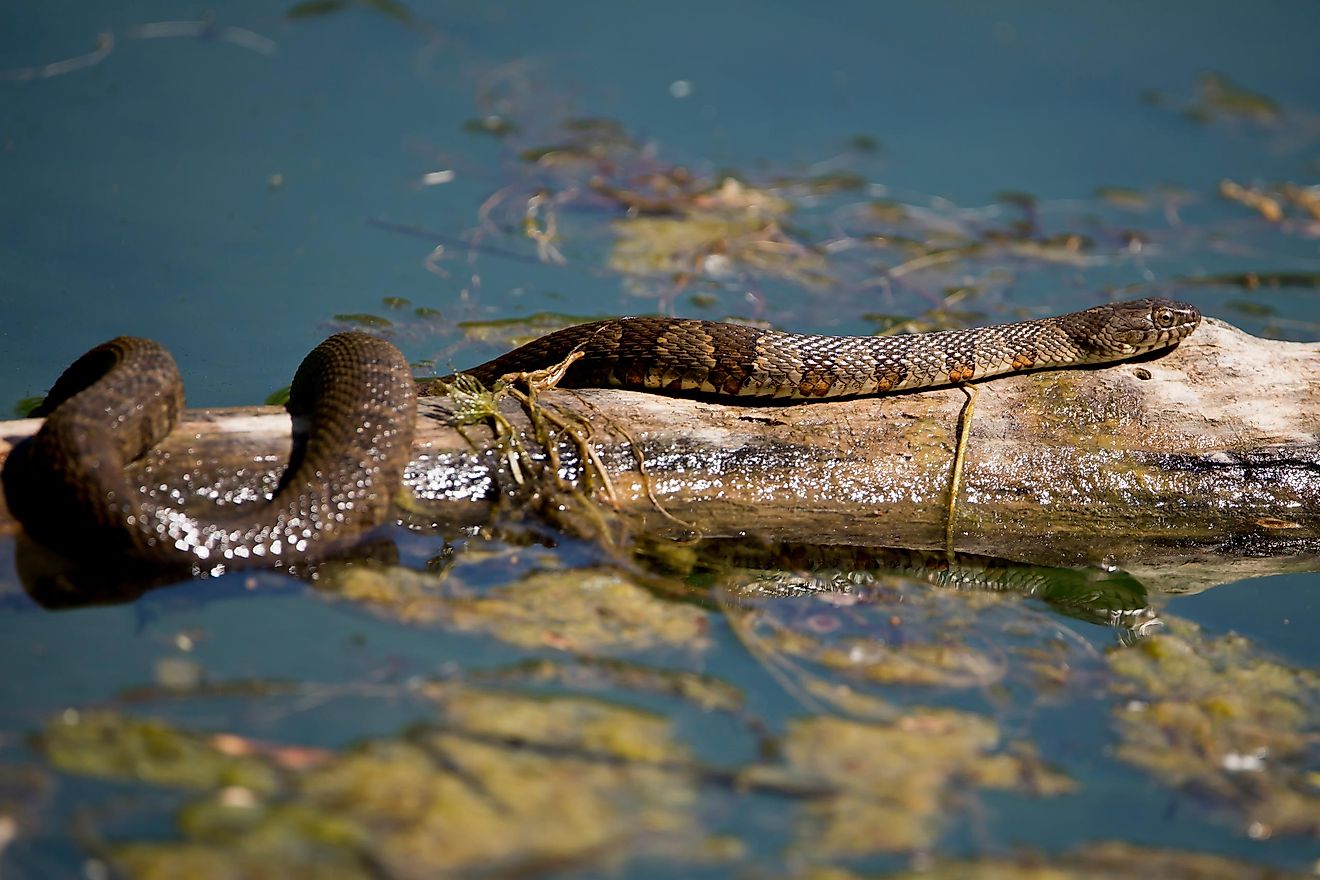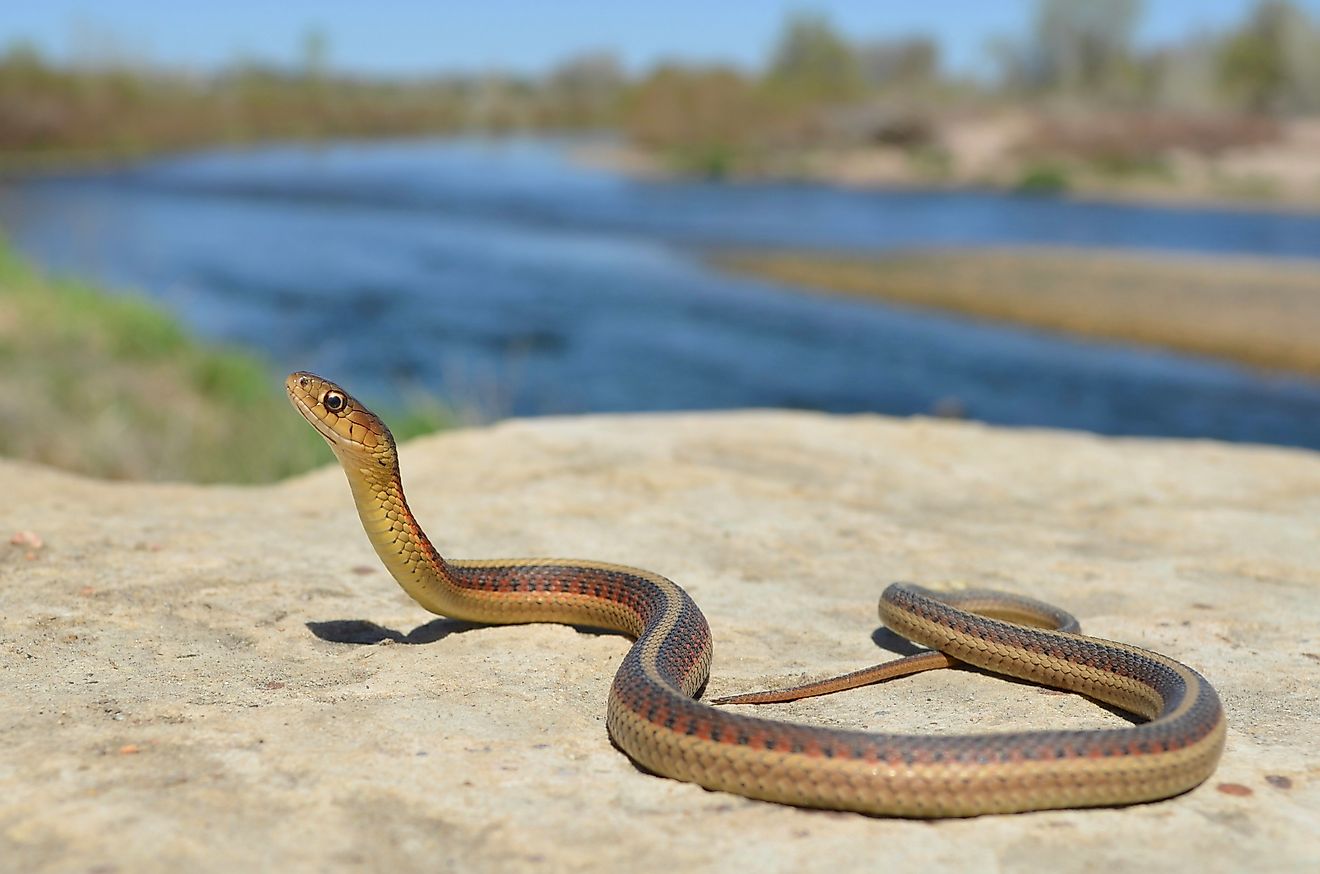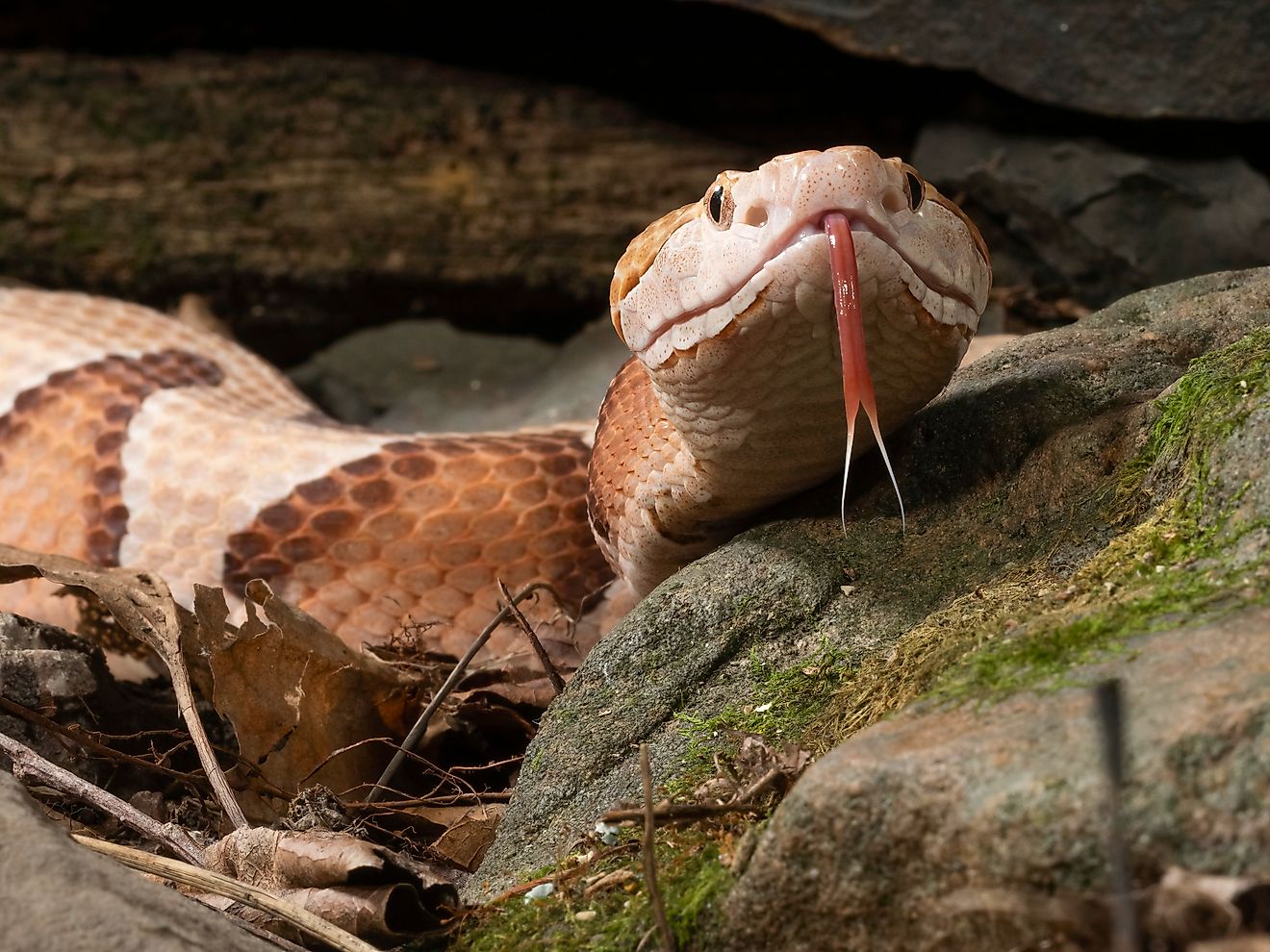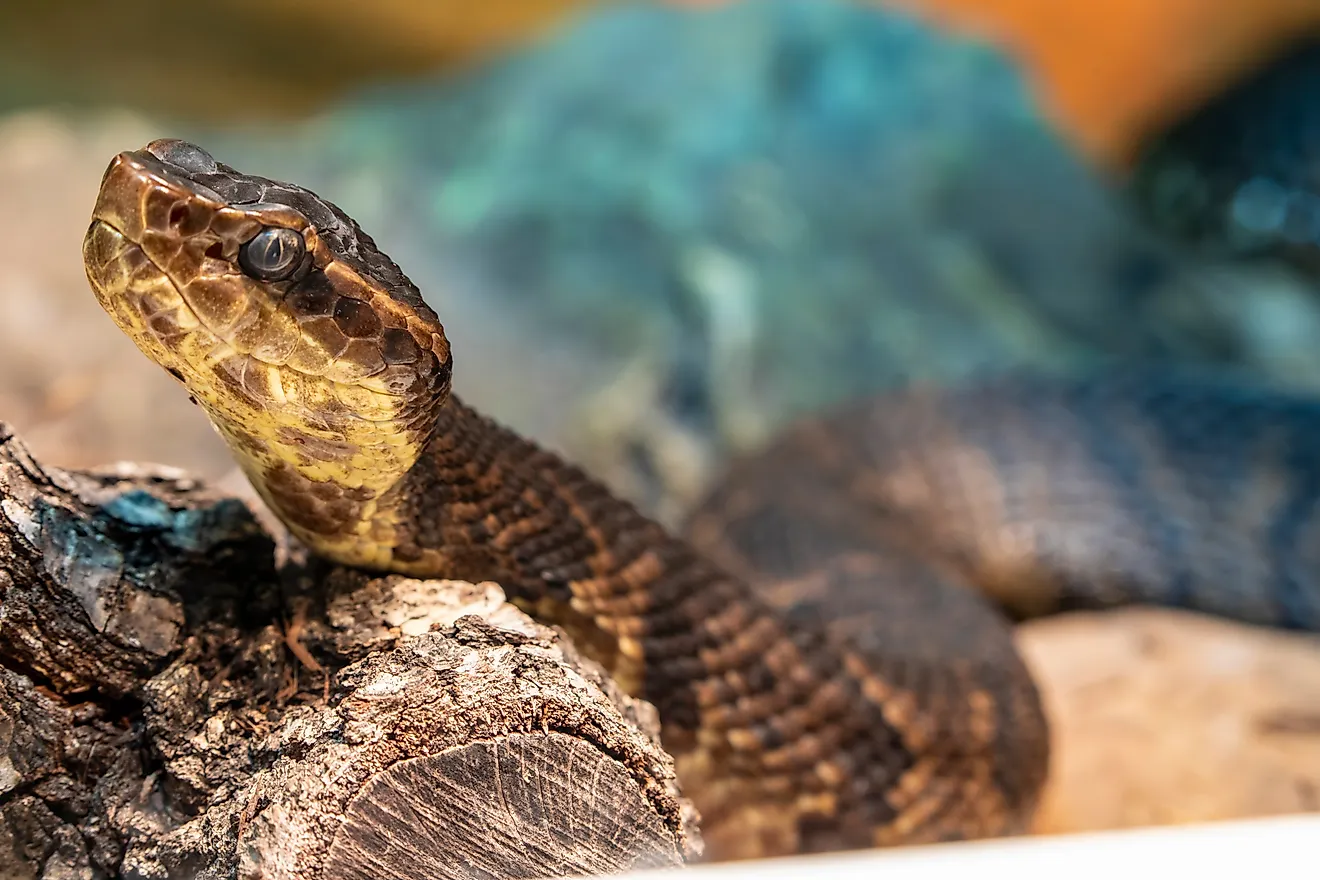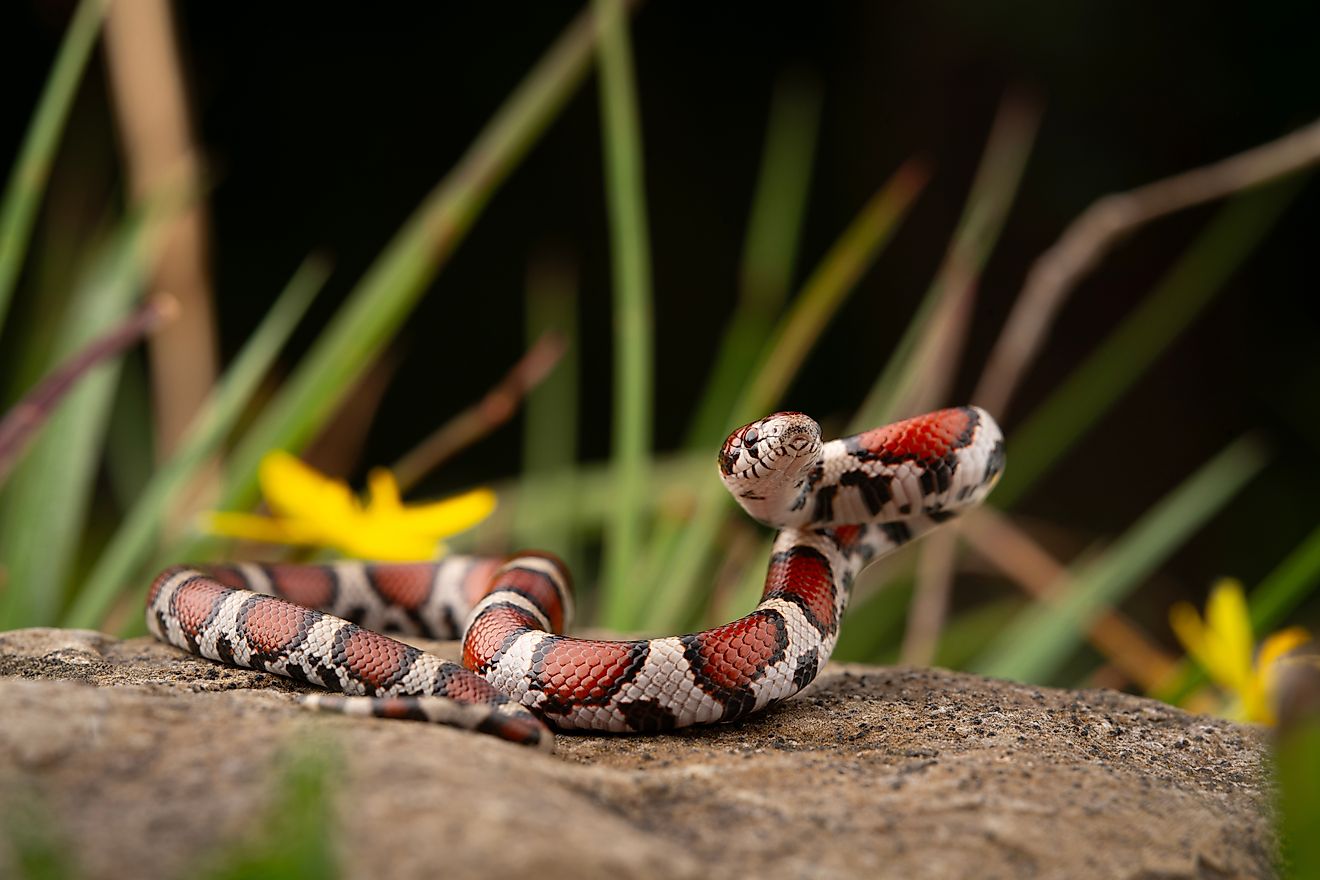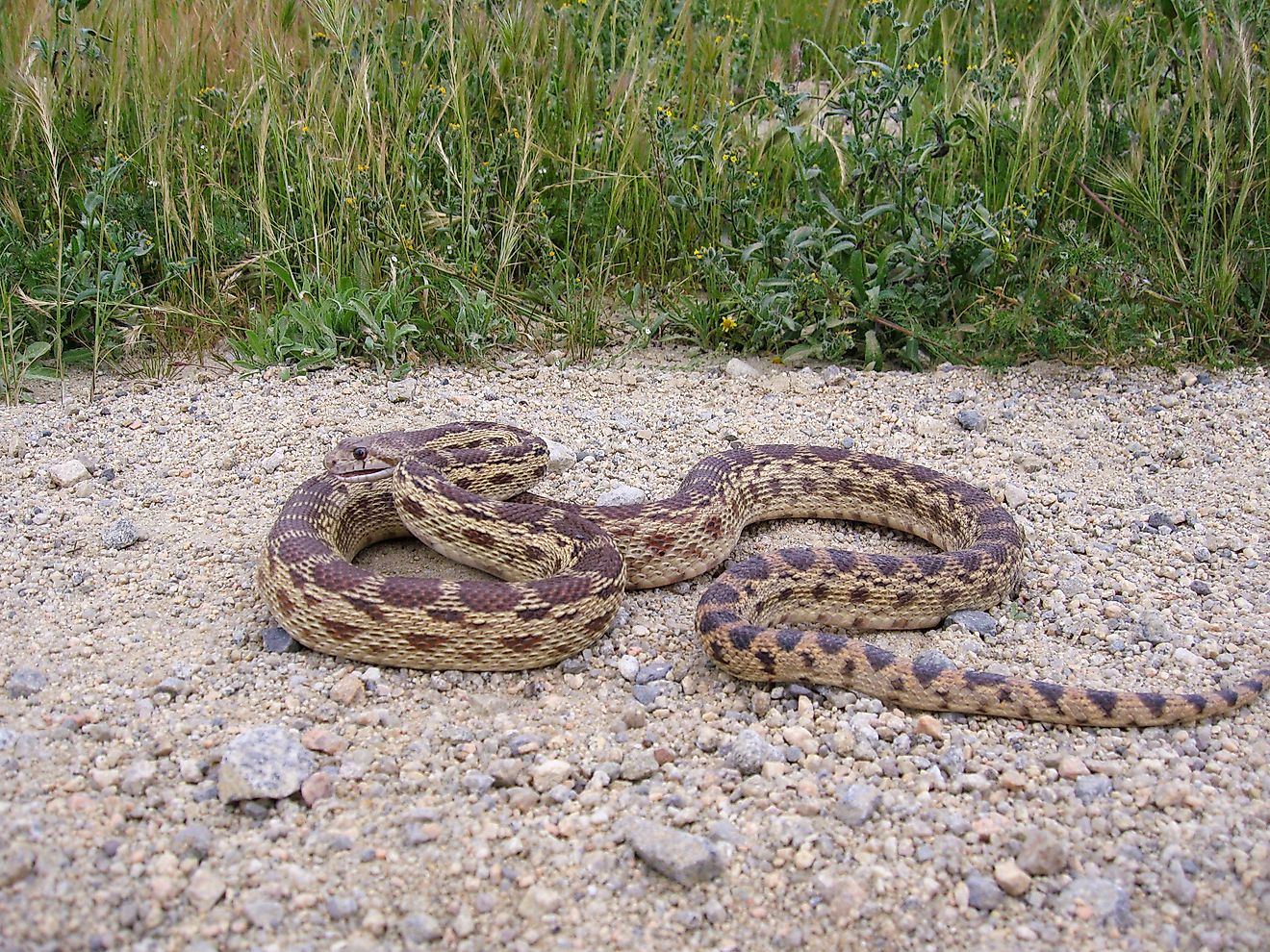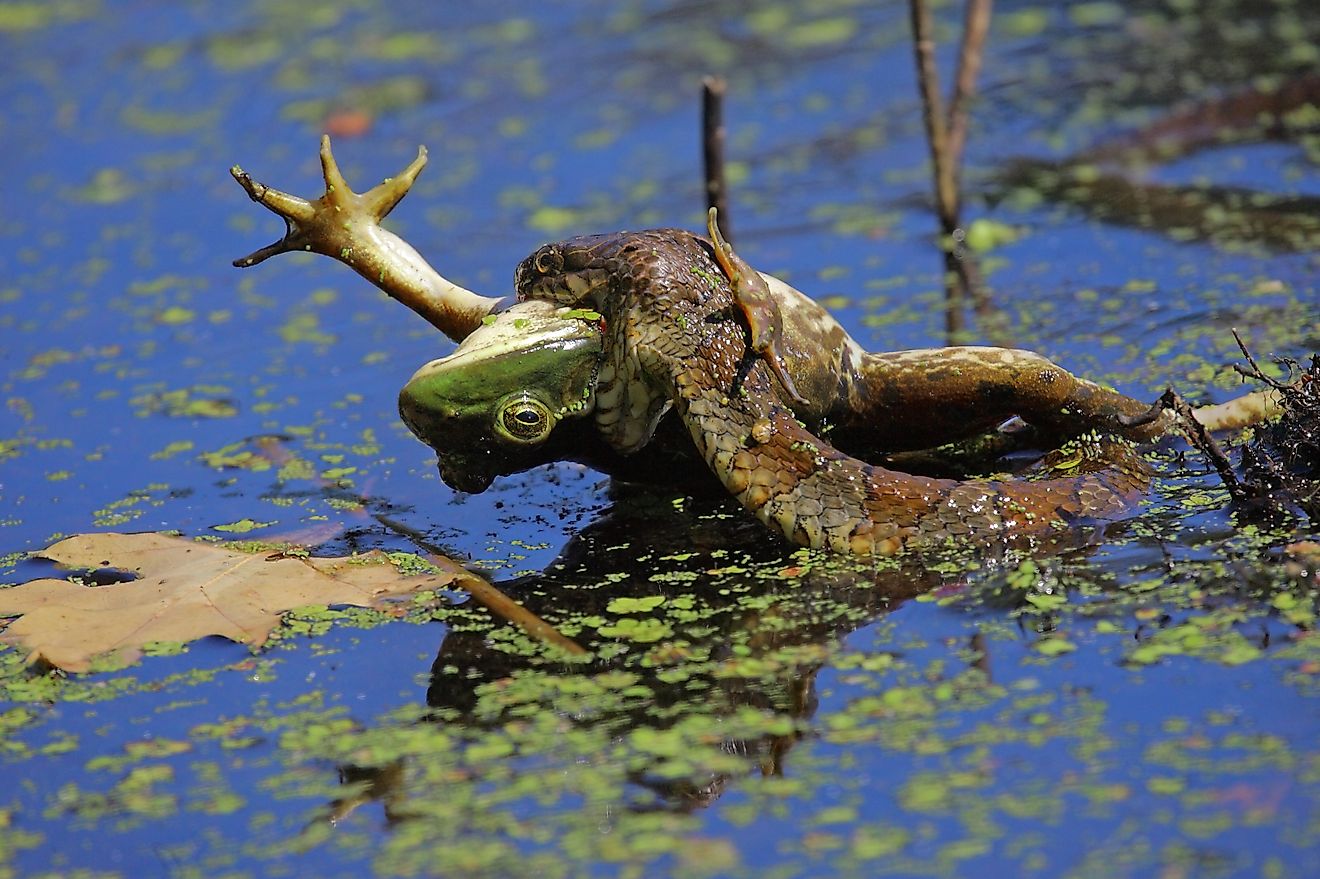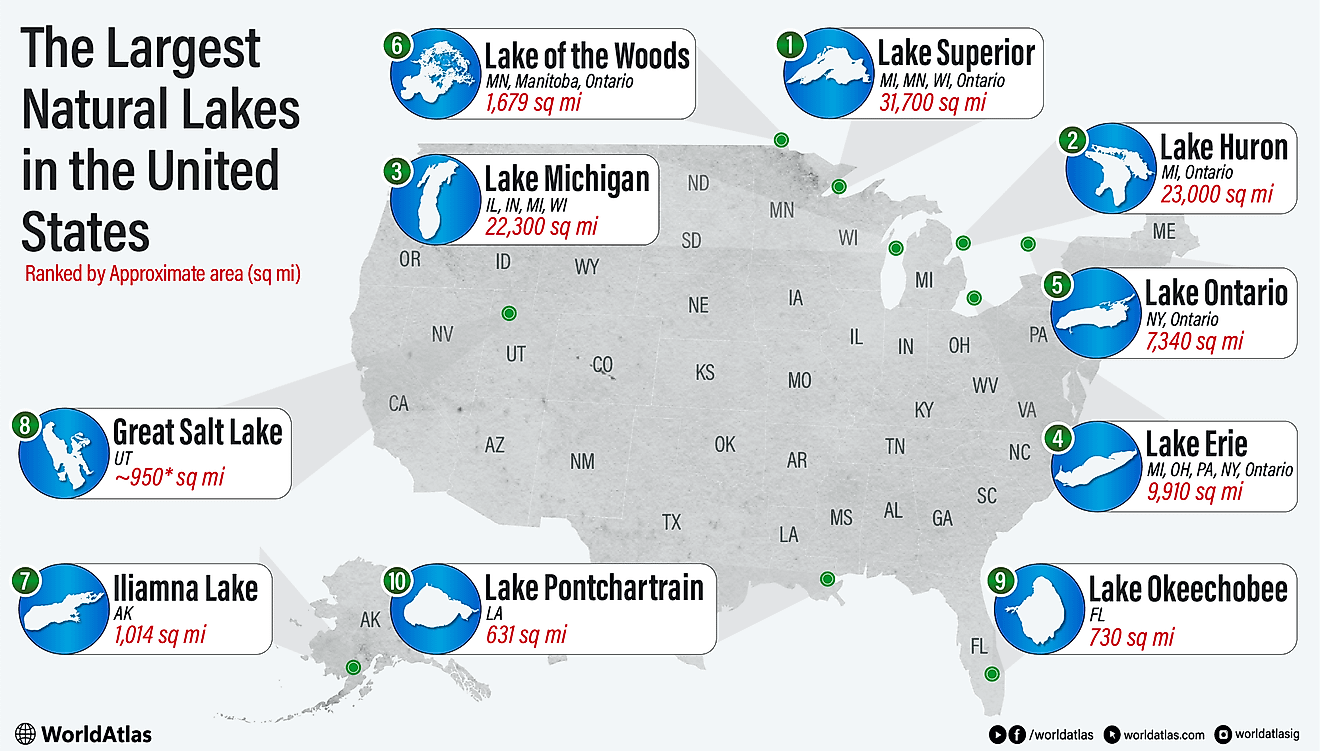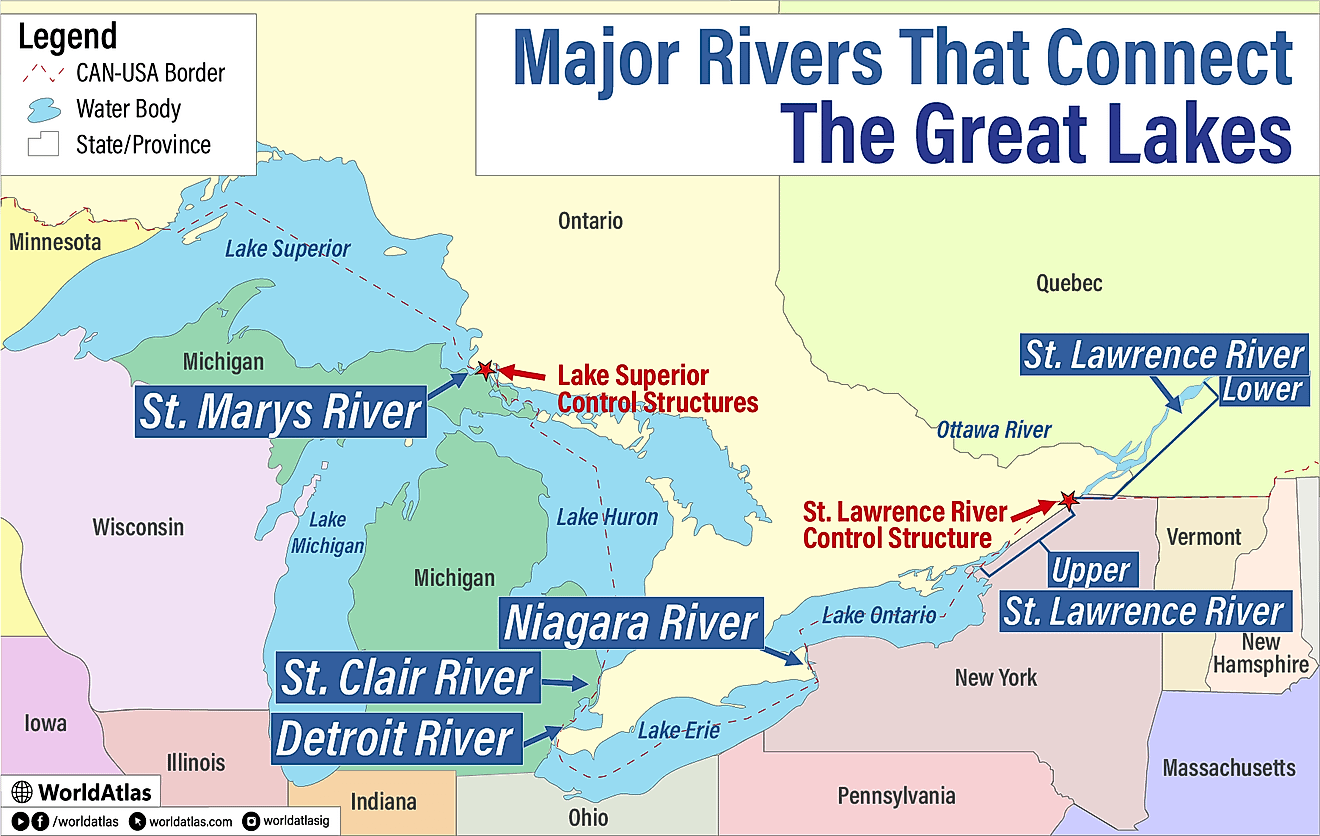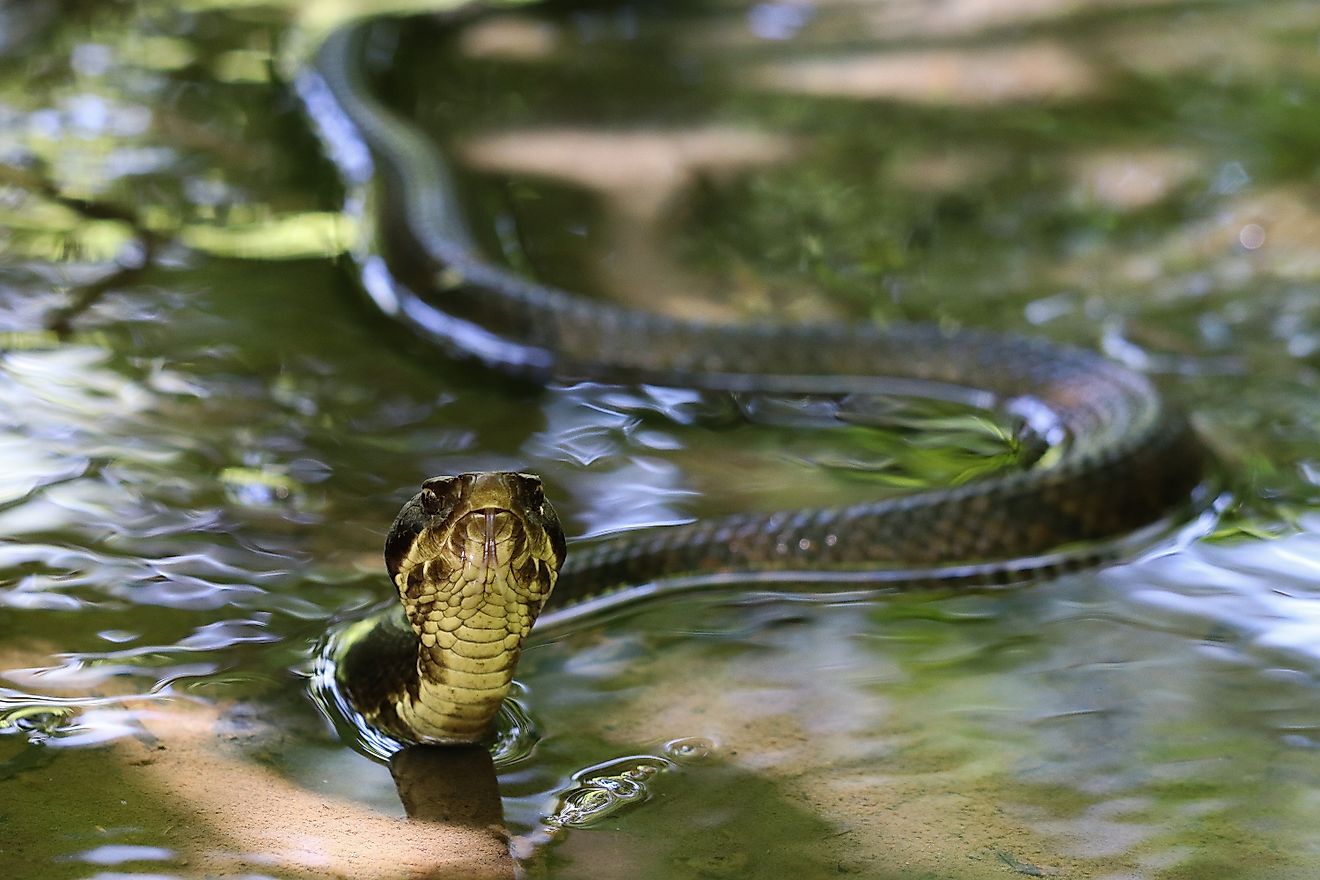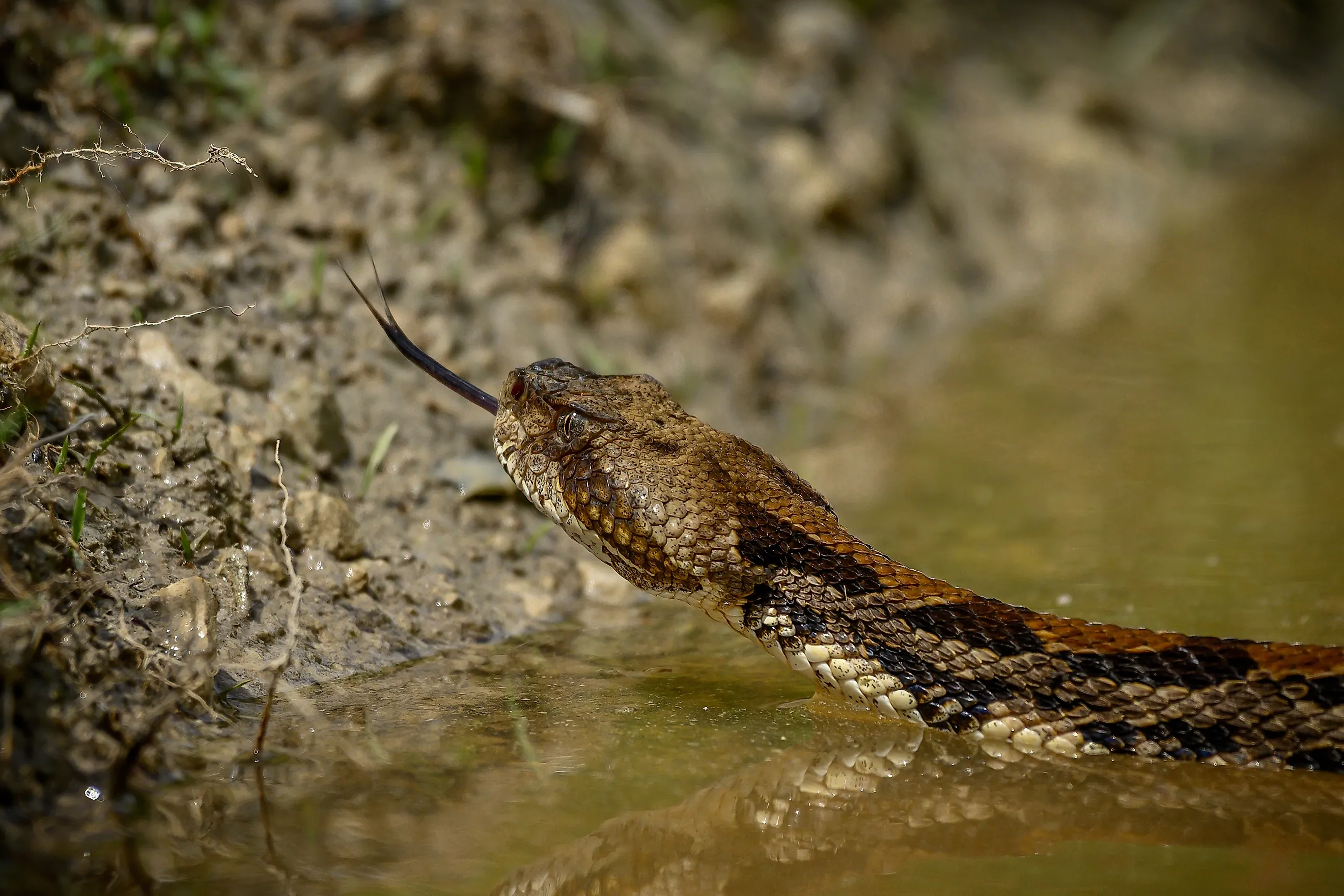
5 Most Snake-Filled Bodies Of Water In Minnesota
Known as the “Land of 10,000 Lakes,” Minnesota is a dream destination for water lovers and outdoor enthusiasts in America. In fact, the state has nearly 12,000 lakes and over 90,000 miles of rivers and streams, opening up many possibilities in the water. Whether this is kayaking along a section of the Mississippi River or relaxing along the coast of Lake Pepin, the activities are endless. However, along with being a great place for human recreation, these bodies of water are also ideal habitats for animals, including snakes.
While some species are harmless, such as the garter snake, others, like the timber rattlesnake, might cause concern due to their potent venom. With a total of 17 snake species in the state and plenty that adore water, it is vital to know which ones to look out for and where you should be wary of slithering silhouettes. To help you out, this article delves into five of the most snake-filled bodies of water in the “Land of Sky Blue Waters.”
The Mississippi River
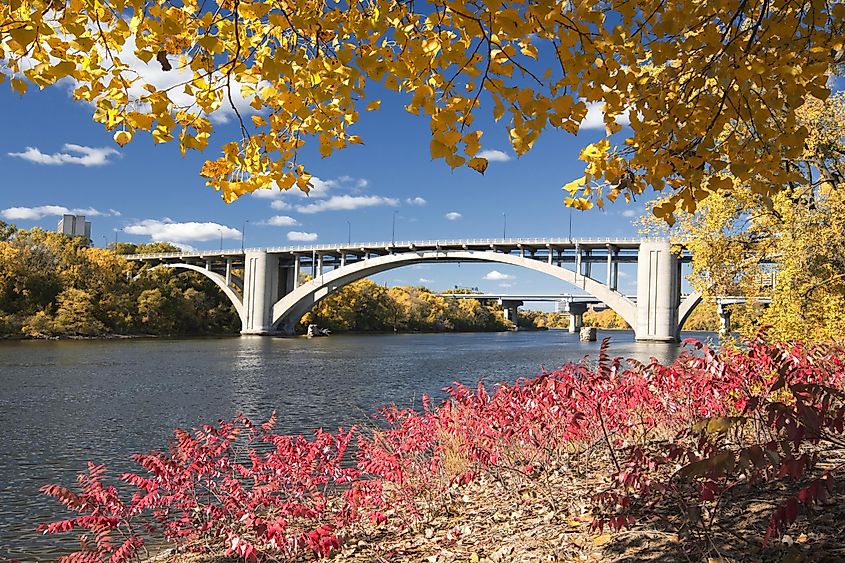
The Mississippi River is the second-longest river in the United States, and one of the most important. It spans 2,340 miles through ten states, from Lake Itasca in Minnesota to the Gulf of Mexico (Gulf of America) in Louisiana. Throughout its 650-mile route in Minnesota, the river is lined with plenty of landmarks, parks, and cities, such as Itasca State Park and the Twin Cities of Minneapolis and Saint Paul. It makes sense that people are always in and around the river, whether it is boating, fishing, kayaking, or even water skiing.
Due to its vast length and varying coastal landscapes, plenty of snake species thrive along the Mississippi River. One of the most dangerous is the timber rattlesnake (Crotalus horridus), one of the only venomous snakes in Minnesota. This pit viper is endemic to the region and features a gray-brown coloration with dark brown or black crossbands. Adults reach an average length of up to 60 inches; even with their size, they are adept swimmers. It is best to give these snakes a wide margin when out on the water, as their venom is neurotoxic and hemorrhagic. Thankfully, their distinct tail “rattle” sound is a great way to know when you’re too close. Apart from the timber rattlesnake, northern water snakes (Nerodia sipedon) and fox snakes (Pantherophis vulpinus) can be found along the Mississippi River in Minnesota.
Lake Pepin
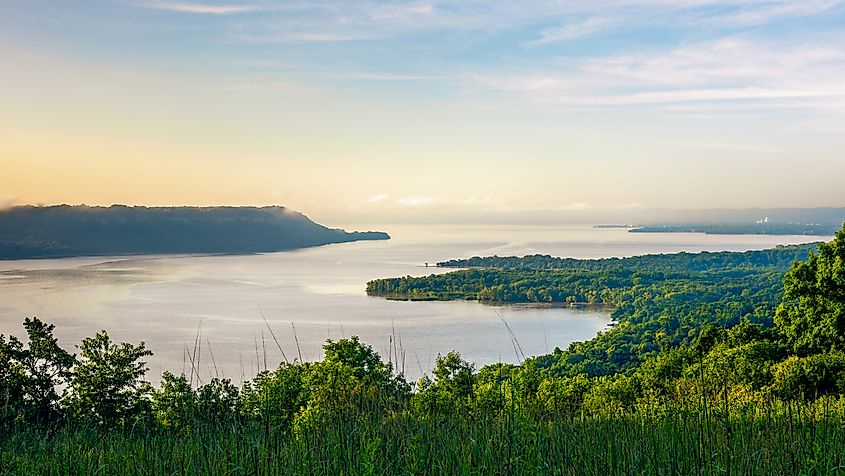
Technically part of the Mississippi River and spread between both Minnesota and Wisconsin, Lake Pepin is one of the most snake-infested areas in the state. It has a surface area of over 45 miles and is known as the “birthplace of water skiing” for its unique and challenging activities. People come from all over the region to fish, hike, and even go snowmobiling on the lake when it freezes over during winter. Moreover, it abounds with natural beauty thanks to miles of dense forests spread across the coast. While this forested area is great for the view and activities, it is also a hub for reptiles, especially snakes.
To this end, snakes can be found en masse near Lake Pepin, and two of the most common species are the northern water snake and common garter snake (Thamnophis sirtalis). The former, as the name suggests, is one of the most prolific swimmers in the snake world, known for feeding both above and below the surface. They have a brownish coloration with darker crossbands, although some specimens can also be completely black. While they are not venomous, these snakes often startle visitors due to their resemblance to the venomous cottonmouth. Thankfully, these snakes aren’t very aggressive, and as long as you give them a wide berth, bites are rare.
Red Lake
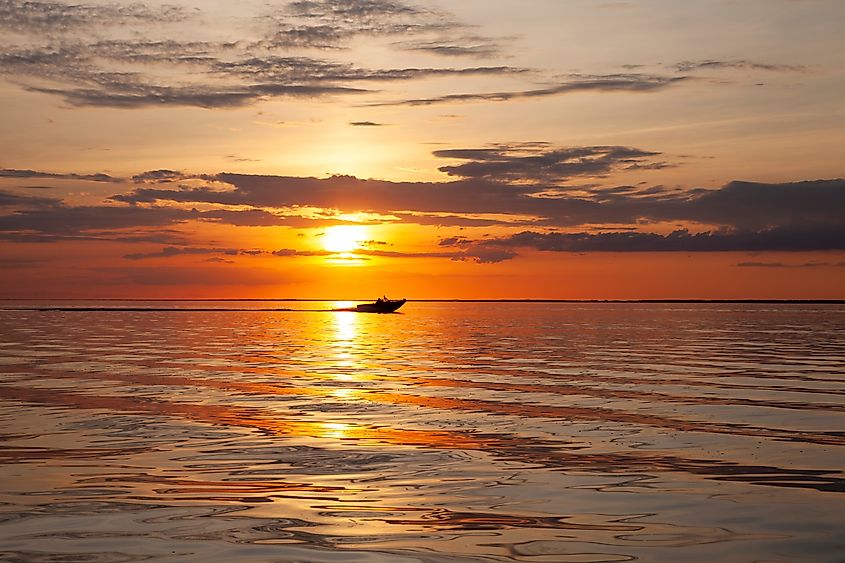
Dwarfing Lake Pepin, Red Lake is a massive 440 square mile body of water that is actually two lakes. It is divided into two sections by a peninsula, and is Minnesota’s largest freshwater lake. To this end, the lake is a hub of both recreation and wildlife. Ice fishing is one of the most popular activities here, with plenty of fish species such as lake sturgeon, rock bass, lake trout, and bigmouth buffalo. The lake also has a unique Ojibwe origin story, and was believed to be formed when Nanabozho, an Ojibwe trickster, slapped Paul Bunyan with a giant walleye, leaving an imprint that became these connected bodies of water.
With such a legend and so many fish, snakes are bound to follow. In fact, Red Lake is prime habitat for the garter snake, with both the common garter snake and plains garter snake (Thamnophis radix) found here. These snakes are small to medium-sized species spread throughout North and Central America. While both vary in appearance, the common garter snake is easily identifiable thanks to a distinct pattern with yellow stripes on a darker brown background. Both species are non-venomous, and while bites should still be avoided, they will rarely break the skin. They prefer hiding in tall weeds near water, so keep an eye on the ground when around the lake.
St. Croix River
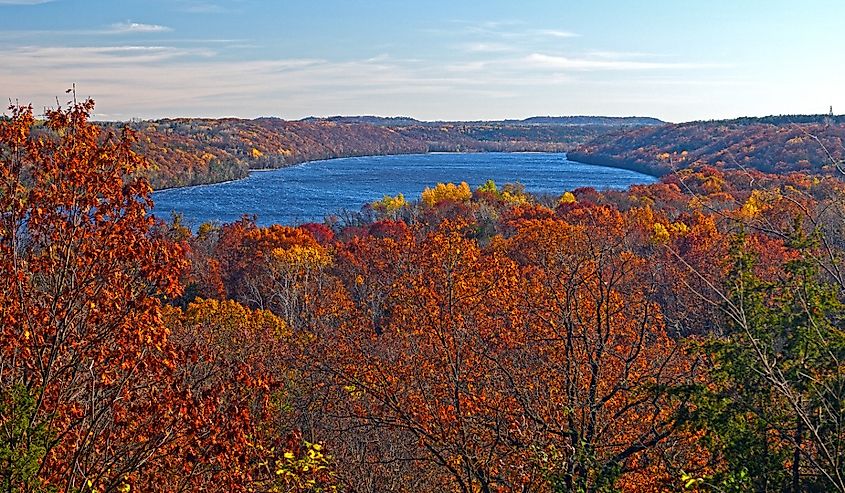
The St. Croix River, a tributary of the Mississippi, is a major river in Minnesota and Wisconsin. It spans nearly 170 miles and was one of the eight waterways designated as a “National Wild and Scenic River.” When it comes to tourism, the river is touted as one of the best canoeing destinations in the nation, and is also a great spot for kayaking, hiking, and wildlife watching. Plenty of waterfront areas like Interstate State Park are always full of life, and even offer camping areas with covered shelters, electricity hookups, and picnic areas.
While camping along the St. Croix River is sure to be fun, it also exposes you to the ground and snakes. Thankfully, this river is not home to any venomous species, and visitors can expect to find bullsnakes (Pituophis catenifer sayi) and gopher snakes (Pituophis catenifer). Bullsnakes have been on the rise in the region, and this endangered species is often hard to spot. They can burrow underground and are often elusive despite their size, sometimes growing over six feet long. Gopher snakes grow to a comparable length, which can sometimes be intimidating. That said, both snakes are rarely aggressive, so you can canoe along the stream without any stress.
Lake Of The Woods
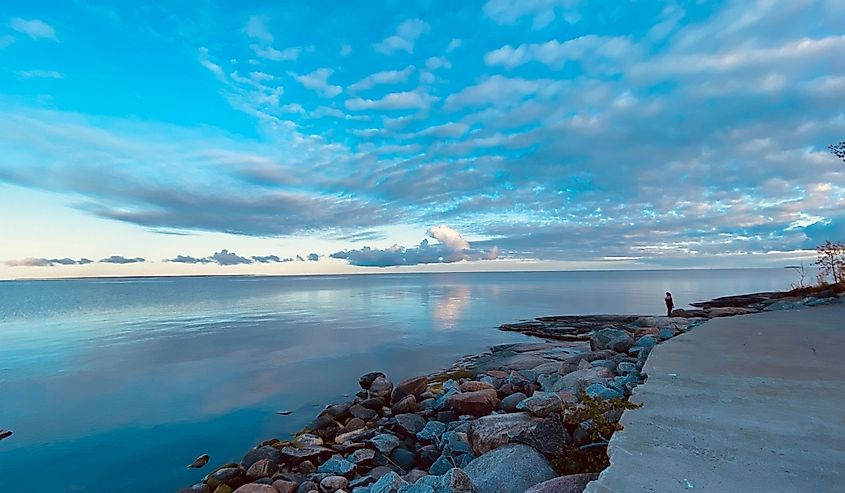
Situated in parts of Canada and northern Minnesota, Lake of the Woods is a glacial lake fed by the Rainy River. It is the sixth-largest freshwater lake in the United States and home to a diverse ecosystem. Above the water, bald eagles and American white pelicans call the lake home, while black bears and deer frequent the surrounding forests. Meanwhile, walleye are abundant in the water, and the lake is nicknamed the “Walleye Capital of the World,” hosting plenty of fishing competitions and events.
Along with the array of non-slithering animals, Lake of the Woods is also home to a diverse population of snakes. The common garter snake is native to these waters, and sightings are common. It is a great swimmer and also prefers to hide in coastal areas, making the Lake Of The Woods an ideal habitat. Meanwhile, red-bellied snakes and eastern hognose snakes (Heterodon platirhinos) also live in the area, although they do not enter the water frequently. While these species are non-venomous, the region is also near known habitats for timber rattlesnakes, so it's always better to be wary of all snakes at Lake of the Woods.
Stay Alert In These Snake-Filled Bodies Of Water
Spending time in Minnesota’s great outdoors is a treat, but knowing what slithers nearby can make all the difference. Whether it’s the harmless plains garter snake or the venomous timber rattlesnake, identifying species helps keep both humans and wildlife safe. These lakes and rivers may offer some of the best recreation in the state, but awareness ensures you enjoy the water without unpleasant surprises.
